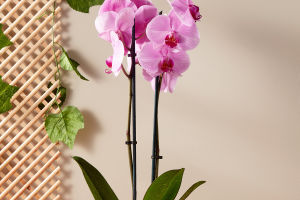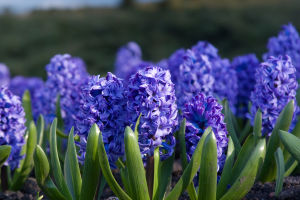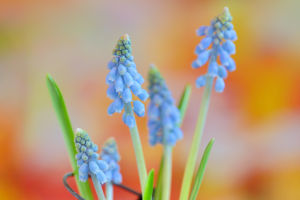
Lykkers, have you ever brought home a gorgeous orchid, only to see it droop or stop blooming a few weeks later? Don't worry, you're not alone. Orchids are known for their beauty and elegance, but they're also pretty picky when it comes to care.
If we want these flowers to keep shining, we need to understand their habits and meet their needs the right way. Today, let's explore the three best ways we can help our orchids bloom longer, grow stronger, and stay happier at home.
Watering: Not Too Much, Not Too Little
One of the most important things we need to get right is watering. Orchids hate sitting in soggy soil. If we water them too much, their roots can rot quickly. On the flip side, if we leave them dry for too long, they'll struggle too. So, what's the balance?
Let's use soft water if possible—rainwater is perfect. And make sure the water is room temperature. Orchids actually prefer to be slightly dry than too wet, so it's best to water only when the roots are dry. You can feel this by gently touching the potting mix or looking at the roots—if they're silver-white, it's time to water.
Also, avoid watering directly into the center of the leaves (the leaf axils). Water pooling there can cause fungus or mold. A great alternative is to let the orchid pot soak in water for about 15 minutes, then drain it well.
And here's a bonus tip: orchids love humidity! So feel free to mist the leaves from time to time. Products like the COMPO orchid leaf spray are made just for this and can help your orchid feel like it's back in its tropical home.
Pruning and Feeding for a Bloom Boost
Once our orchid flowers have faded, don't just leave it alone! We can encourage more blooms by pruning properly. For moth orchids (like Phalaenopsis), look for the third node (or “eye”) from the bottom of the stem. Use clean scissors to snip right above that spot. If we're lucky, the plant will grow a few more flower buds on the same stem.
Orchids also need a steady supply of nutrients to thrive. They're not heavy feeders, but during growth and flowering periods, we should feed them regularly with a fertilizer designed especially for orchids. For example, a product like COMPO Orchid Fertilizer 250ml works really well because it's balanced and gentle.
Think of it like this: pruning shapes the orchid and feeding gives it the energy to bloom again. A little effort really goes a long way.
Repotting: Time for a New Home
Repotting might sound like a big task, but it's actually one of the best things we can do for our orchids every couple of years. It keeps their roots healthy and gives them fresh soil that isn't worn out. The best time to repot is early spring. If your orchid is blooming, wait until the flowers have dropped.
Here's a step-by-step guide:
1. Loosen the Pot: Gently squeeze the plastic pot to loosen the roots.
2. Remove the Plant: Carefully lift the orchid out, trying not to damage any roots.
3. Trim the Roots: Use clean scissors to cut off any old, brown, or rotting roots.
4. Get the New Pot Ready: Choose a slightly bigger pot and fill the bottom half with orchid soil like COMPO SANA Orchid Mix.
5. Replant: Set the orchid in and fill the rest of the pot with soil. Give it a light shake to settle everything in.
6. First Watering: Wait until the next day to water it. COMPO SANA soil feeds the plant for 8 weeks, so we don't need to fertilize right away.
Pick the Right Container
Orchids need pots that breathe—literally. Clear plastic pots with side holes work great because they let us check root health and allow airflow. This helps prevent root rot and lets light in, which is actually good for photosynthesis.
Tools That Make It Easy
If we're serious about keeping our orchids happy, a few products can really help:
• COMPO Orchid Leaf Spray: Keeps the leaves healthy and glossy.
• COMPO Orchid Fertilizer: Perfectly balanced for delicate orchid needs.
• COMPO SANA Orchid Potting Mix: Specially designed for orchids with pine bark, coconut husk, and moss for airflow and drainage.
Keep It Blooming!
So, Lykkers, caring for an orchid isn't as hard as it seems when we follow these simple rules: water just right, trim and feed when needed, and give them a new pot every couple of years. These plants reward our effort with gorgeous blooms and elegant vibes.
Have you tried growing orchids at home? What's your biggest challenge? Let's share our orchid stories together—drop a comment and let's help each other grow happier flowers! 🌸


